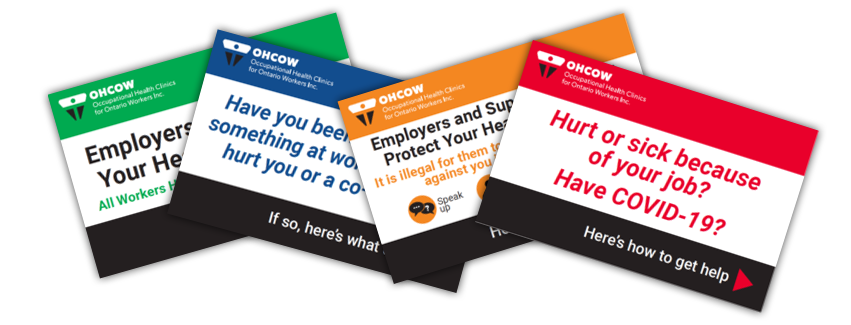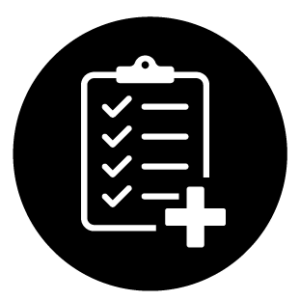Employers have the right to determine and control the work, as long as everything is legal.
Workers, however, have the power to protect their own health and safety as well as that of their co-workers.
RIGHTS
As an employee, you have the following three basic rights:
![]()
Right to Know
Workers have the right to know about workplace health and safety hazards.
![]()
Right to Participate
Workers have the right to make recommendations about health and safety.
![]()
Right to Refuse
Workers have the right to refuse work if they believe it endangers their health and safety.
Learn more about each Right using these dynamic bars:
Workers have the right to know about workplace health and safety hazards.
According to the Occupational Health and Safety Act (OHSA), employers must provide a wide range of information about workplace hazards to workers and Joint Health and Safety Committees (JHSCs). JHSCs have a duty to communicate with workers.
WHMIS, the Workplace Hazardous Materials Information System, is one example of the right to know. WHMIS is a Canada-wide system designed to protect workers by providing information about hazardous materials on the job.
WHMIS has three main parts:
- Labels
- Safety data sheets (SDSs)
- Worker education and training.
Workers have the right to make recommendations about health and safety.
Employers must recognize this right to participate. They must consult with JHSCs about methods of testing equipment, substances, or other workplace factors, and about health and safety training programs.
A worker on the JHSC has the right to be present at the beginning of testing, to participate in Ministry of Labour inspections and investigations, to investigate serious accidents, and to inspect the jobsite regularly.
JHSCs have the right to make recommendations to employers about health and safety improvements. Employers must reply in writing within 21 days. Certified worker members have the right to investigate complaints dealing with dangerous circumstances.
Workers have the right to refuse work if they believe it endangers their health and safety.
The OHSA sets out specific procedures. It’s a two- stage process.
You can refuse based on your subjective belief that the work is dangerous. You must inform the supervisor or employer.
Once a supervisor has investigated, you may still have reasonable grounds for believing that the work is dangerous. In this case, you may continue to refuse work. A Ministry of Labour inspector must be called to investigate.
Workers’ Basic Health and Safety Rights – Wallet Cards
Available in English, French, Spanish, Ukranian, Vietnamese, Tigringna, Arabic and Dari these wallet-size reference cards contain helpful information for new / young workers* who need to exercise their rights for a healthy and safe work environment:
*New to Canada / New to the workforce

There is also a set of wallet cards that are specific to Migrant Farm Workers.
RESPONSIBILITIES
As an employee, your responsibilities include the following:
![]()
To work in compliance with OH&S acts and regulations.
![]()
To use personal protective equipment and clothing as directed by the employer.
![]()
To report workplace hazards and dangers to the supervisor or employer.

To work in a safe manner as required by the employer and use the prescribed safety equipment.

To tell the supervisor or employer about any missing or defective equipment or protective device that may be dangerous.
RESOURCES
The following resources provide additional information on workers' rights and responsibilities:

